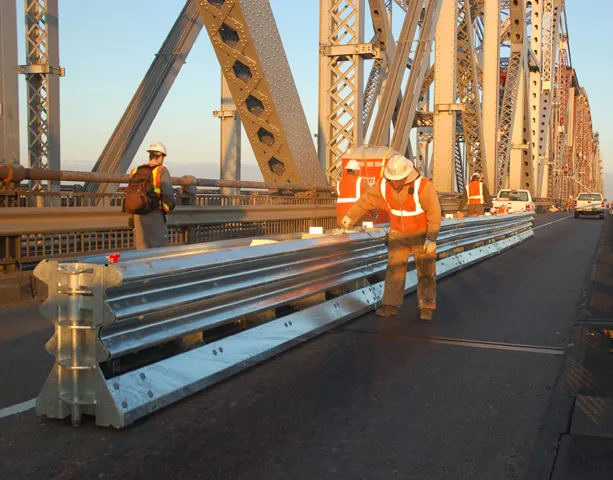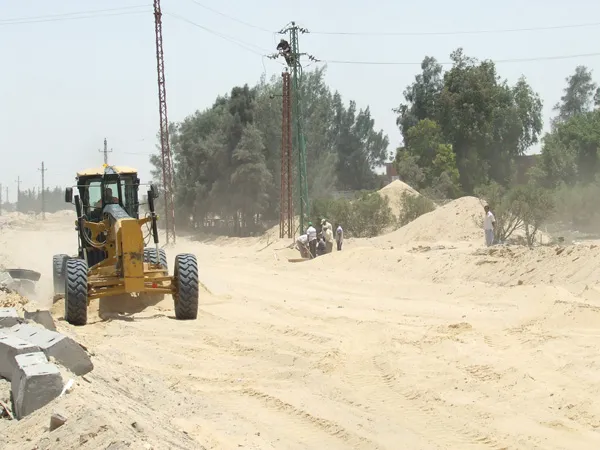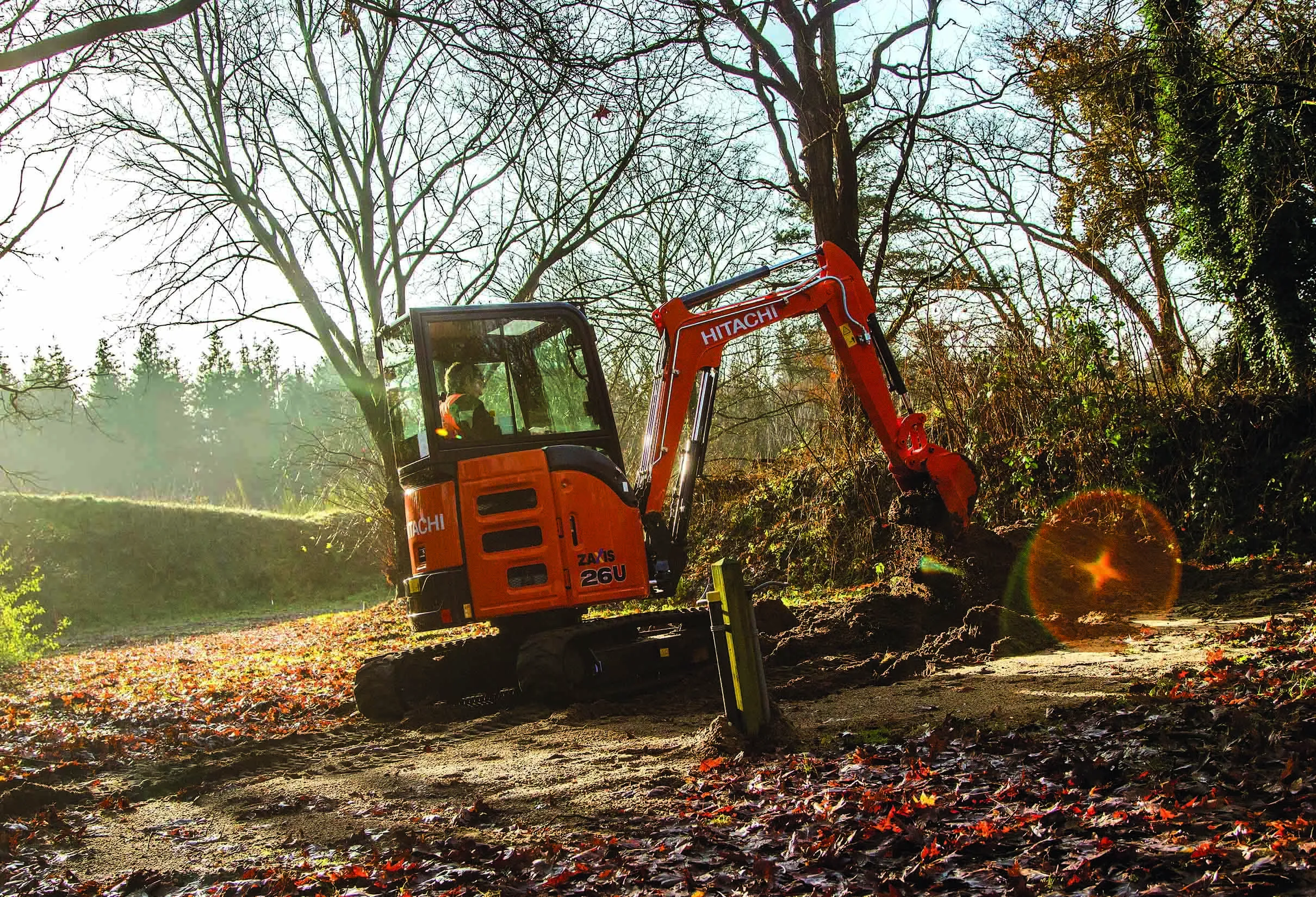
Highway barriers provide a necessary safety solution for roads and many units are designed to deform during a crash situation, helping reduce the effects of an impact on vehicle occupants. Different standards have been established in the US and in Europe, where much of the development work has been carried out, which has led to a complex situation regarding new products.
In the US, the
In Europe, the CE Marking is the universally accepted symbol of conformity. Beginning in January of 2011, it will become a requirement for crash cushions sold in the European Union to carry the certification. To earn the marking, manufacturers must undergo a certification process which includes comprehensive documentation and testing, along with a facility inspection to examine quality control procedures and monitoring processes. Each manufacturer and its products must meet the standards set out in EN1317-5, ensuring crash cushions are compliant and additional production will continue to meet the same standards and specifications as the product originally tested.
The QuadGuard CEN family of crash cushions from
Developed for fast installation in workzones, Energy Absorption Systems' Vulcan Barrier is a portable steel longitudinal barrier that meets NCHRP 350 TL-3 & TL-4 and EN-1317 H2 & N2 test requirements as a longitudinal redirecting barrier. Available in effective lengths of 4m and 12m, Vulcan Barrier uses a vertical steel pivot pin to interlink each section allowing the system to follow curves of up to 6º per segment. The lightweight construction and flexibility of the Vulcan Barrier offers an effective solution for many highway maintenance and upgrade projects.
The highly portable Vulcan Barrier can be deployed as a free-standing system and is designed to be used with a variety of end terminal options. Optional castors can be fitted to ease deployment and movement, while the lightweight and stackable design allows up to 160m to be transported on one truck, offering major transport savings. The Vulcan Barrier can also be used in a gate configuration to create easy access through a permanent median barrier or into a work zone.
Noise is another issue that has to be considered in highway construction sites and Italian firm
Fracasso's combined road retaining system features a diffractor device and can be specified to meet an array of restraint requirements, to suit the needs of a particular highway application. At the same time, the acoustic performance of the system can be matched to the specific needs of the installation.
According to Fracasso, its combined system offers another key benefit in that it can reduce installation costs. Because the system offers a combination of restraint and noise reduction capabilities, it provides a lower cost option for clients that would otherwise require separate barrier and noise attenuation products. This combined safety system offers a reduced overall width compared with installations where noise attenuation barriers are located behind the safety barrier. This minimises the amount of land required on a highway installation while the combined structure provides a greater strength than for separate safety and acoustic barrier arrangements. Because the combined system takes up less space, it is also well-suited to the narrow space applications on bridges and viaducts. On sites where the ground is uneven or mountainous, using a combined barrier offers an efficient engineering option, according to Fracasso and a wide array of different variants is now available to suit a range of geographical and technical requirements as a result.
The company has already supplied an array of combined acoustic/safety barrier systems on highways in Italy and intends to boost sales into international markets.
Installation options
Newton and Frost Fencing is working on the noise barrier, safety barrier and parapet packages on a key bridge contract at Weymouth in the UK. Due to be installed in the third quarter of 2009, new safety barriers will form part of a single carriageway road, linking the A354 Manor Roundabout near Radipole to the A354 at the top of the Ridgeway Hill, to form the new €102 million Weymouth relief road.
The firm is sub-contractor for Corus and
The two main bridges on the site are Littlemoor Road and Chapel Lane and have a total of 245 linear metres of parapets that meet the N1 rating. The first structure to be erected will be Littlemoor Road starting in mid July and Corus Tubes will be delivering the parapets shortly.
The Vetex system was developed by Corus to offer high levels of containment, while reducing the number of system components by 90% to reduce installation times. According to Corus, Vetex has no need for routine tensioning and combined with the use of galvanised steel, this means the system offers low maintenance requirements. Using the product also cuts the amount of time needed for installation, improving site safety for highway workers and minimising lane closures and the associated traffic delays. Reducing the number of Vetex system components allows the space between each post to be increased, meaning fewer posts have to be installed and fewer foundations dug. The Corus product offers wide post spacing and with beams up to 5m long, this means that few lap joints are needed, reducing installation time.
Meanwhile in the US,
The novel Visi-Barrier product is highly versatile and can be used in median barriers, tunnels and bridge parapets as permanent barrier forms. Highly innovative, these precast polymer concrete panels are offered with an optional retro-reflective safety stripe that is said to give high visibility in all weather conditions. The stripe is created using highly retro-reflective glass beads and the units have a bright, white surface. This high visibility means that these panels can offer an effective solution for road delineation at night or in rainy weather. The units are said to be able to resist salts, chlorides and corrosion and can also be custom made to fit a wide variety of sites.









